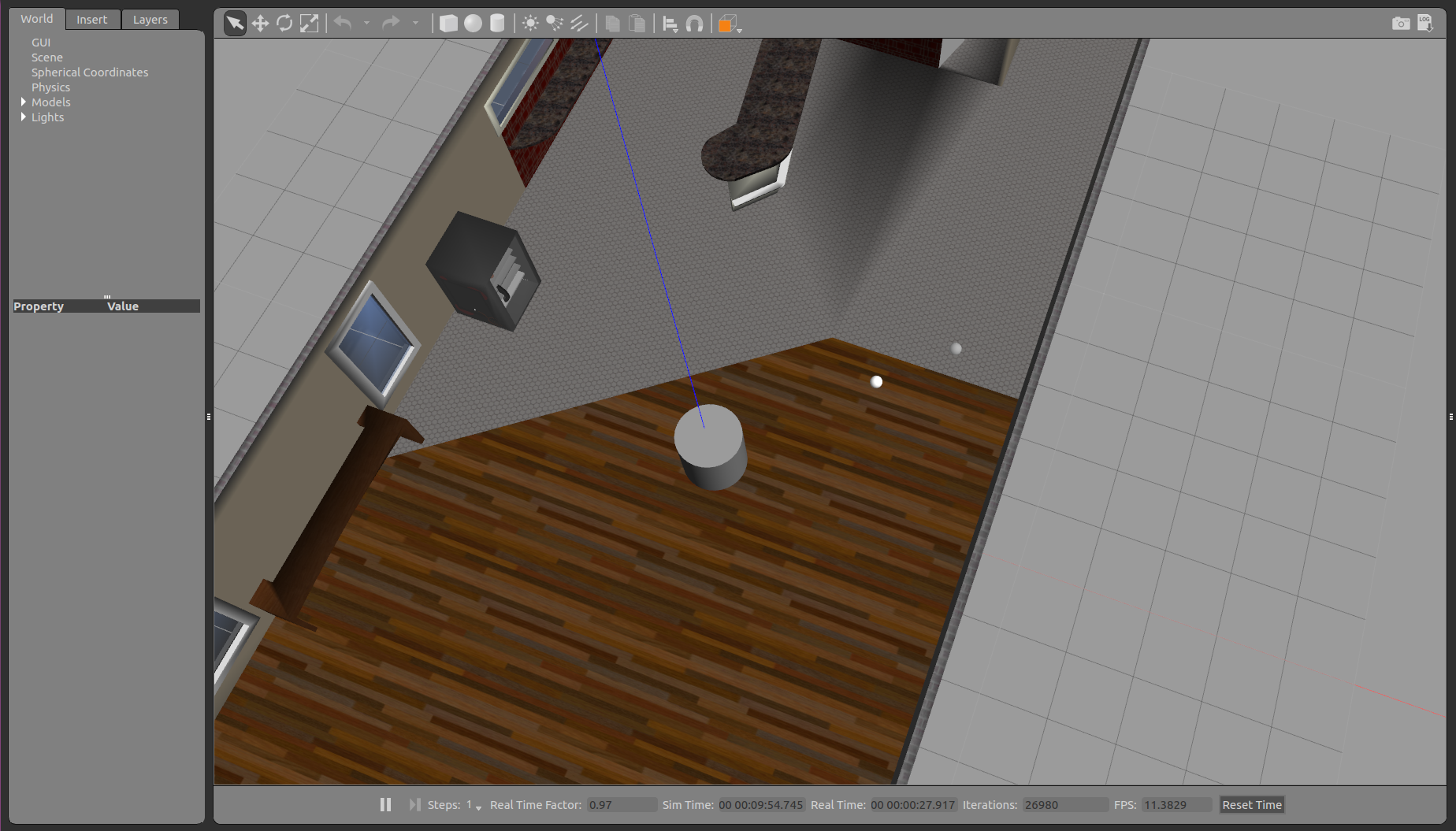In this Gazebo simulation, a swarm of robotic agents creates a topological map of its environment. Each of the robots performs a Brownian motion in the x-y-plane. When two robots bump into each other, the location and timestamp of the contact is recorded.
The simulation is run for a few minutes. When it is finished, a graph is constructed from the contact event database (TBD), and the Betti numbers of the corresponding simplicial complex are computed (TBD).
The project contains two Gazebo environments, basic.world and cafe.world (launched by default, see screenshot below). In both environments, the free space has the shape of a flat plane with a circular disc removed. Therefore, the free space is conntected, but not simply connected.
Install ROS, Gazebo and x-term. Use catkin_make to build the ROS package.
Start the simulation with the command
$ roslaunch topological_swarm simulation.launchSet the launch argument use_rviz:=1 to visualize the agent model in RViz.
When a simulation run ends, the contact events between agents are saved as a plain text file at ~/.ros/subscribe_to_contact.txt. This file contains a list of contact event data in the form of comma separated values. An example line reads
t: 659.117, x: 0.305312, y: 0.999596, m: swarm_agent1, o: swarm_agent3
where t is the timestamp, x and y are the event coordinates on the surface, m stands for the model that recorded the event, and o stands for the other model.
